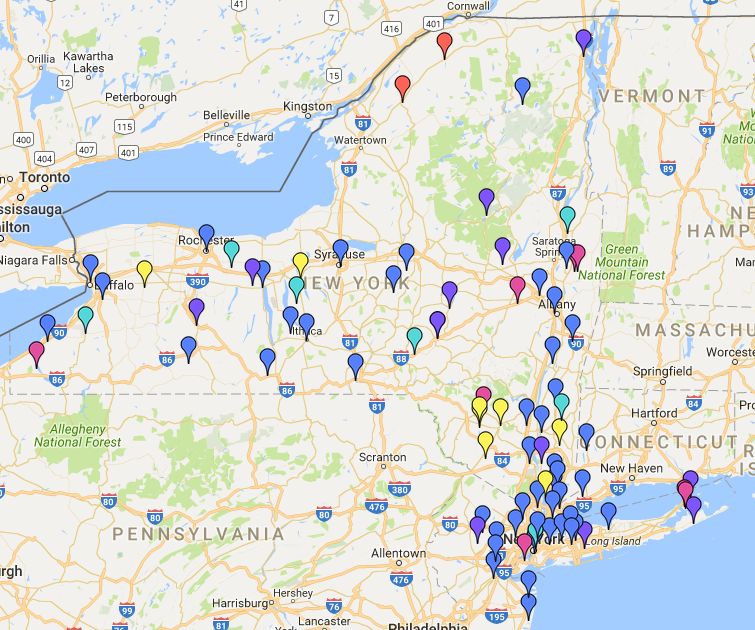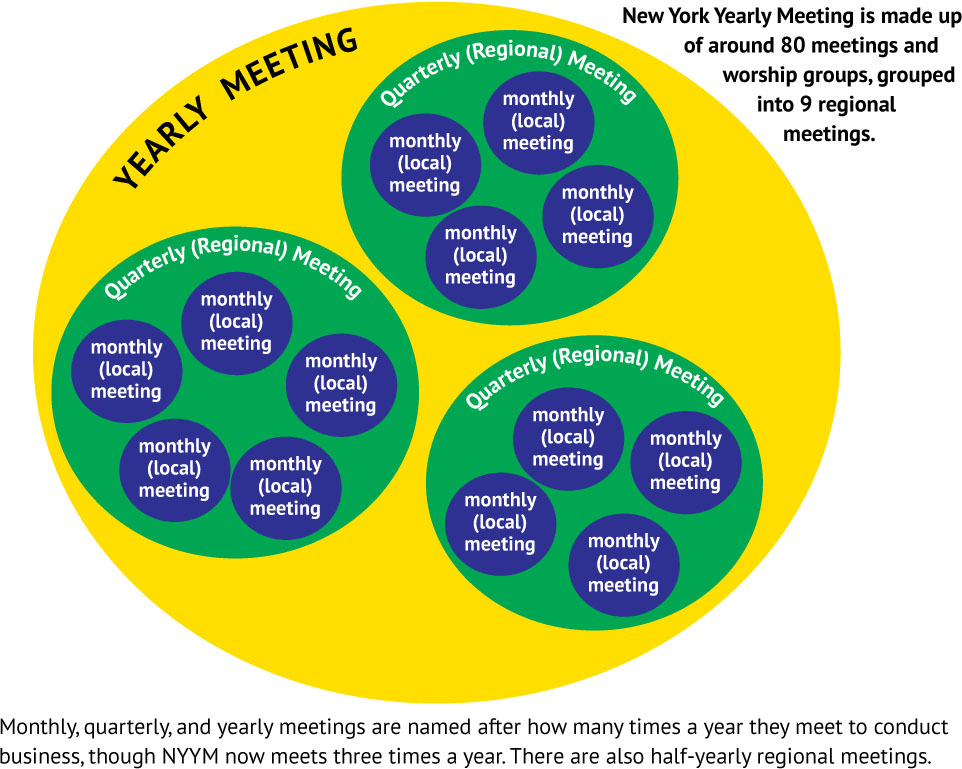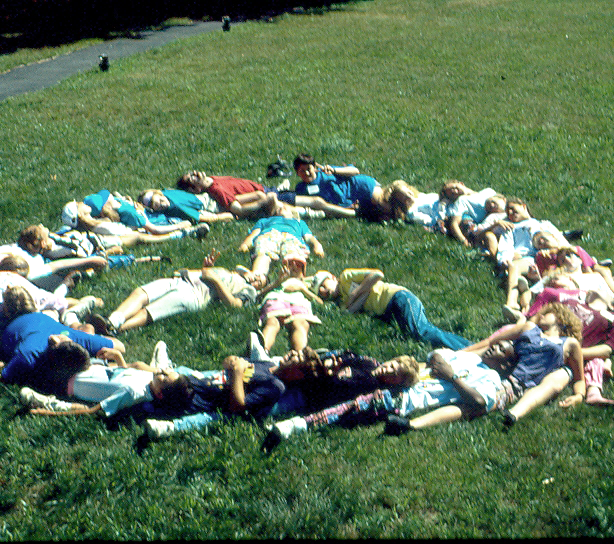Two New York City Quaker Housing Histories
In the later part of the 20th century, New York Quarterly Meeting was instrumental in establishing two successful housing projects, Friends House in Rose Hill and Cedars/Fox Hall, for low-income people in New York City. Over the years there’s been some misconceptions about these projects. Neither project was ever intended to provide housing for Friends.
Friends House in Rose Hill
by Jim Morgan
Brooklyn Meeting
with assistance from Margery Cornwell, John Maynard, and Carol Jackson
A concern for addressing the issue of homelessness in NY Quarter existed since the 1960s when Friends went on patrols to help those in need. In 1968 or 1969, members of 15th Street Meeting, including Margery Cornwell, began going out into the neighborhood to distribute food and blankets to those they found huddled in doorways. They soon recognized that only permanent housing for these benighted souls would effectively mitigate the problem.
In Autumn 1988, when the ad hoc NYQM Committee to House the Homeless first met, New York City was engulfed by two social crises, each apocalyptic in its own way: Acquired Immunodeficiency Syndrome, or AIDS; and homelessness. It is now hard to recall just how profoundly New York City was overwhelmed by these plagues. On top of that, they were interrelated. It was distressingly common that young gay men, at that stage the primary victims of this still mysterious disease, were thrown out into the street by their families, adding to the numbers of de-institutionalized mentally ill and intellectually challenged people, among others, already there. It was said, in those days, that perhaps as many as three thousand individuals were living in the bowels of Grand Central Terminal. It was a stunningly grim moment in our municipal history.
As a fairly recent attender at Brooklyn Meeting, when I (Jim Morgan) heard that NYQM had set up an ad hoc committee to consider how it might help to deal with the very visible presence of unhoused citizens, I made sure to join them. Carol Jackson's selfless servant-leadership was what kept us together and focused. Even so, it took eight and a half years of worshipful collaboration, and Betty Williams's firm commitment to caring for those afflicted with AIDS guiding us, to open the doors of a newly renovated building at 130 East 25th Street to house fifty about-to-be-formerly homeless people living with AIDS—not just HIV. The price of admission, administered by the NYC Human Resources Administration, to that lovely haven was painfully high.
There were, in the 1980s, a significant number of NYQM members and attenders suffering from HIV/AIDS and many others who were serving as their caregivers. The pain and anguish coursing through our community affected all of us. So there were Friends who, given that criterion, might well have been candidates, when the doors of Friends House opened in April, 1997. However, as far as I can recall now, there was no one of them who was homeless. Even if there had been someone in our midst who might have qualified, we the sponsors of this residence would have had to have made a special request of NYC/HRA for a Friend to be given preference as a potential tenant. We were, it should be said, appreciated by the agency as a religious sponsor of such housing that welcomed gay men. By the way, I'm pleased to say that Friends House, now known as CitiLeaf Housing, is still providing that service.
There is a misconception that Friends House, through efforts by non-Friends on its board, was “stolen” from us about ten years ago. I prefer to say we were out-maneuvered by folks who hoped to gain access to a valuable piece of property. The City ended that ambition by subsequently imposing a twenty-year lease extension that requires Friends House to be used only for low-income tenants with special needs. The community is still benefiting from a service we established but NYQM has been spared many hours of discussion about how to keep it running. I say that's a blessing.
Friends with questions about this article can contact me directly. In Friendship, Jim Morgan
Cedars/Fox Hall
by Carol Jackson, Margery Cornwell, and John Maynard
15th St. Meeting
as told to Elizabeth Gilmore
Cedars/Fox Hall, in the Longwood section of The Bronx, is a development of supportive and affordable housing in the city. The house was never intended or expected to provide any sort of housing for Friends unless they fit in an income or special needs category.
It began with a small group of Friends, including Carol Jackson, Steven Monroe Smith, Frederica Azania Clare, Patty Frascatore, Maureen Healy and John Maynard, with Tony Shitemi serving as the principal architect. This group of Friends formed Friends in the City, Inc. (since laid down, in 2019), which planned for a project involving energy-efficient geothermal heating and cooling, the rebuilding of a run-down community landmark building, a community garden, and the planting of insulating greenery on the roof. They worked in conjunction with the Lantern Group, which is an experienced non-profit developer and manager of permanent housing for homeless and low-income New Yorkers as well as a provider of social services to formerly unhoused and inadequately housed people of New York City communities. Groups who receive housing and supportive services from the Lantern Group include individuals and families living with AIDS, mental illness, addictive illnesses, and youth aging out of foster care.
Lantern Group managed the development—including the public financing applications, construction, and renewal of public service contracts—for Cedars/Fox Hall. As the project lives on under non-profit control by the Lantern Group, it continues to receive substantial and essential public funding. No project using government funds can offer special housing and service privileges to groups with religious or other private affiliations.
Cedars/Fox Hall is a handsome facility, now providing much needed housing and services. Once again, as in the case of Rose Hill, Friends spearheaded a housing project that continues to serve many in need without bearing the burden of continuing supervision and support.





